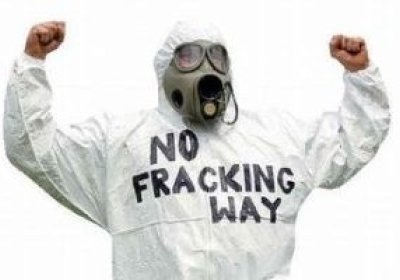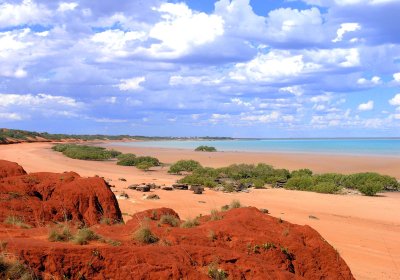Anti-fracking activists are calling on Premier Mark McGowan not to allow fracking in the Kimberley, reports Alex Salmon.
Kimberley
Buru Energy has admitted in its submission to the Western Australian Fracking Inquiry that testing of flowback fluids from its 2015 fracking operations in the Kimberley showed elevated levels of the chemical contaminants boron and barium and the radionuclide radium-228.
Community opposition may soon put fracking on hold in the Kimberley region of north-western Australia. This could culminate in the first big victory for the anti-fracking movement in Western Australia.
Buru Energy, partnered with Mitsubishi, intends to frack four wells east of Broome 34 times this year, starting in May. This is the largest single fracking proposal to be put forward in Western Australia so far. The area is a wetland used by Aboriginal owners.
In late January, the Environmental Protection Authority (EPA) decided not to assess a proposal for fracking in Western Australia’s Kimberley region.
Buru Energy plans to conduct 34 fracks in the region starting this year.
It intends to conduct most of these fracks at four existing wells: two at Yulleroo, 90 kilometres east of Broome, and two at Valhalla/Asgard, 320 kilometres east of Broome.
The Western Australian government has finalised its acquisition of land in the Kimberley for future development, despite long-standing opposition from environmentalists and the local Aboriginal community.
The 3414 hectares of land near James Price Point — part of one of the most ecologically opulent and pristine stretches of land left in the world — north of Broome, was bought from traditional landowners as “unallocated crown land.”
The area is now under management of LandCorp and the Broome Port Authority.
The campaign against the gas hub at Walmadan (James Price Point) in the Kimberley received a huge boost when about 20,000 people marched through the streets of Fremantle and attended a vibrant and political “Concert for the Kimberley” on February 24.
About 80 people rallied outside the Woodside office in Broome on January 15 to protest the decision by Indigenous affairs minister Peter Collier to allow drilling in the dunes as part work for an LNG processing site. Protesters say this will disturb Aboriginal sacred sites in the area. Photos by Zeb Parkes.
The Wilderness Society released this statement on January 15.
***
The Broome community is outraged at the Minister’s decision announced today to give WA Aboriginal Heritage Act Section 18 clearance to allow Woodside to drill in the dunes west of Manari Road as part of their investigation work for an LNG processing site.
The Wilderness Society released this statement on December 20.
***
The Wilderness Society Western Australia and Goolarabooloo traditional custodian Richard Hunter have commenced legal proceedings against the WA Environment Protection Authority (EPA) and environment minister Bill Marmion in the WA supreme court over the approval of the controversial James Price Point gas processing complex.
The Western Australian government granted final approval to the Woodside gas hub at James Price Point, near Broome on November 19.
The statement below was released by the Broome Community No Gas Campaign on November 19.
***
Over 200 people gathered on Cable Beach on November 18 and unfurled a banner calling for governments at all levels to “Protect the Kimberley”. The banner came from the John Butler Concert for the Kimberley held recently at Federation Square, Melbourne.
The threat facing Western Australia’s Kimberley region received national attention on October 5 when 10,000 people attended a concert for the Kimberley in Melbourne’s Federation Square.
The John Butler Trio and Claire Bowditch performed and Missy Higgins and former Greens leader Bob Brown spoke to the crowd. The concert was organised by The Wilderness Society to raise support for the protection of the iconic area.
The pending approval for the liquefied natural gas (LNG) hub at James Price Point in Broome has come under fire after four of the five Environmental Protection Authority (EPA) board members responsible for assessing the project stood aside due to conflicts of interest. Two of the EPA board members hold shares in Woodside Petroleum, the operator of the $35 billion project.
- Page 1
- Next page










